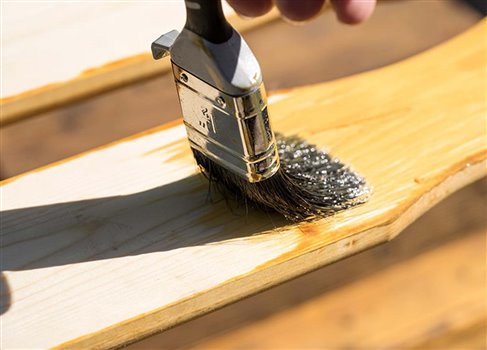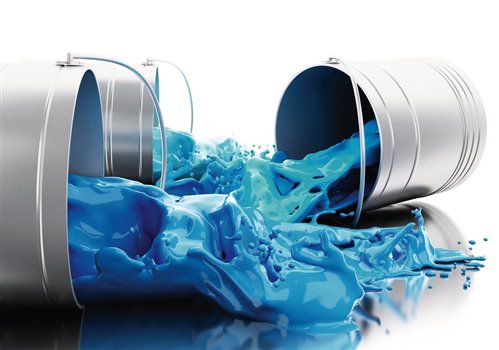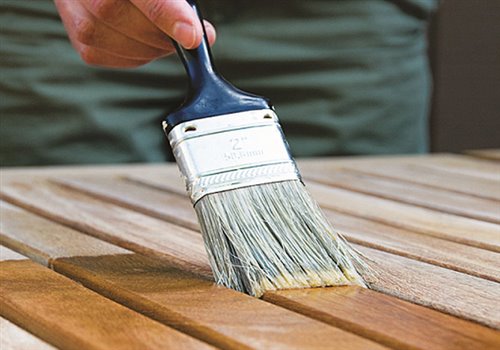Introduction
Since a long time ago, stones have been a popular and widely used material in buildings, facades and various residential and industrial sectors. Disadvantages such as difficulty of their use and transfer and delivery to markets and then to customers have had drastically increased their cost. Such difficulties made people think of replacing stones with materials with a similar appearance and less problems. Consequently, research on artificial stones began.

Artificial Stone
Generally, artificial stone is consisted of two phases: continuous and discontinuous. Resins (organic) or plaster and cement (mineral) can be used in continuous phase, which is the matrix (ground) of the artificial stone structure. This phase mainly creates adhesion, unifies the structure, and arranges the materials and components next to each other in a united form. The use of continuous phase with polymer material (resin) is very popular in making artificial stone, because capabilities of this structure by applying resin modifications can be improved and the final properties of artificial stone can be changed in a desirable way.
The second phase of making artificial stone is discontinuous phase, which is also called the reinforcing phase of the composite structure due to its higher strength and hardness. This phase is not used only to increase the strength but also to reduce the resin consumption in the continuous phase. That is why these materials are also called as fillers. Reinforcements in different physical forms such as powder, fibers and flakes are used in the structure of artificial stones. Generally, their physical shape and dimensions (e.g., length, diameter and thickness) are effective factors in transferring stress from continuous to discontinuous phases. In addition, the surface shape of applied materials on a microscopic scale and their chemical properties as well as the bonds formed on the continuous/discontinuous phases contacting surfaces have theoretically important effect on the final properties of artificial stone, including adhesion and mechanical strength. Various fillers like fibers, silica powder (glass powder) and calcium carbonate are used in industry.


Advantages of Artificial Stone
Good resistance of artificial stones as substitutes for natural stones has attracted attention of stone manufacturers and customers in the market. The main advantages of artificial stone compared to natural stone are as follows:
- Easy cleaning with water and cleaning materials
- Removing common surface cavities of natural stones that prevents penetration of water and oil into the artificial stone structure
- High mechanical resistance and considerable scratch resistance
- Suitable fire and thermal resistance
- Suitable formability
- More affordable price
- Improved strength
- Sufficient durability and stability
Application and Properties of ArtificialStone’s Resin
The resin used in production of artificial stone has significant effect on properties and quality of artificial stone. Thus, choosing the right type of the resin can facilitate manufacturing of standard artificial stones. Artificial stone is used in various applications in Iran including construction of sculptures, walls and facades of buildings, quartz and decorative stones, and the construction of sinks. Different manufacturing process is needed for different applications. For example, for the sink, we use the gel coat in the first layer and filler, resin and other additives in the next layers, while for other applications such as the facade of buildings, there is no need to use gel coat.
The use of acrylic and polyester resins are common in manufacturing Corin artificial stone. Each of these resins has their own specific and different advantages over others. Their features are generally compared below:

According to the table above, the surface hardness in the case of using unsaturated polyester resin is more than that in the case of acrylic resin. It should be noted that the abrasion resistance of ISO unsaturated polyester is higher than that of Ortho unsaturated polyester due to its chemical structure. Thermal resistance of unsaturated polyester resin and its chemical resistance against acids and bases in artificial stones made of unsaturated polyester resin are suitable. In addition, the resin used in artificial stones should have suitable color. Since majority of these stones are white in color, the color and transparency of the applied resin has a significant effect on the color and gloss of the final stone.
The peak temperature during the resin curing is an important parameter in choosing the right resin for the artificial stone, because a high peak temperature increases the yellowness of the final stone and creates cracks in the stone structure after curing. Gelation time must be set precisely, because too long gel time slows down the production line. On the other hand, too short curing time causes defects in the structure and shortens the pot life process in the production line. Gelation time can be modified by adjusting the chemical formula and the amount of cobalt and peroxide.
The resin wettability is a critical parameter in production of artificial stones. Due to high percentage of powder and other materials of discontinuous phase (between 50 and 80% by weight) in the product structure, the wettability of resin in the composite composition improves the use of fillers and other solid materials and thus the final price. The manufacturer must specify the exact amount of different materials in the stone formula to maintain quality of the final product at a high standard level. Improving the final formulation can fix some defects of artificial stone. For example, Aerosil can be used to reduce shrinkage.
Conclusion
There are two types of unsaturated polyester: iso and ortho. They differ in terms of chemical structure, iso type, and mechanical, chemical and heat deflection temperature (HDT) parameters. In addition, iso type has lower water absorption but a higher price than the ortho type. On the contrary, ortho type has a lower quality, but it is more affordable and results in a higher profit margin.
Overall, unsaturated polyester has very favorable properties and affordable price compared to its other alternatives in the artificial stone industry and a bright future and growth in demand are expected for it in the coming decades.
Resitan Company’s unsaturated polyester resins with the codes UP 7271/1, UP 727/2, UP 747/75 and UP 747/7 have all the mentioned parameters such as color and transparency, filler absorption, suitable mechanical resistance, optimal gel time and peak temperature during the curing, which are important for stone makers, at a high level.







